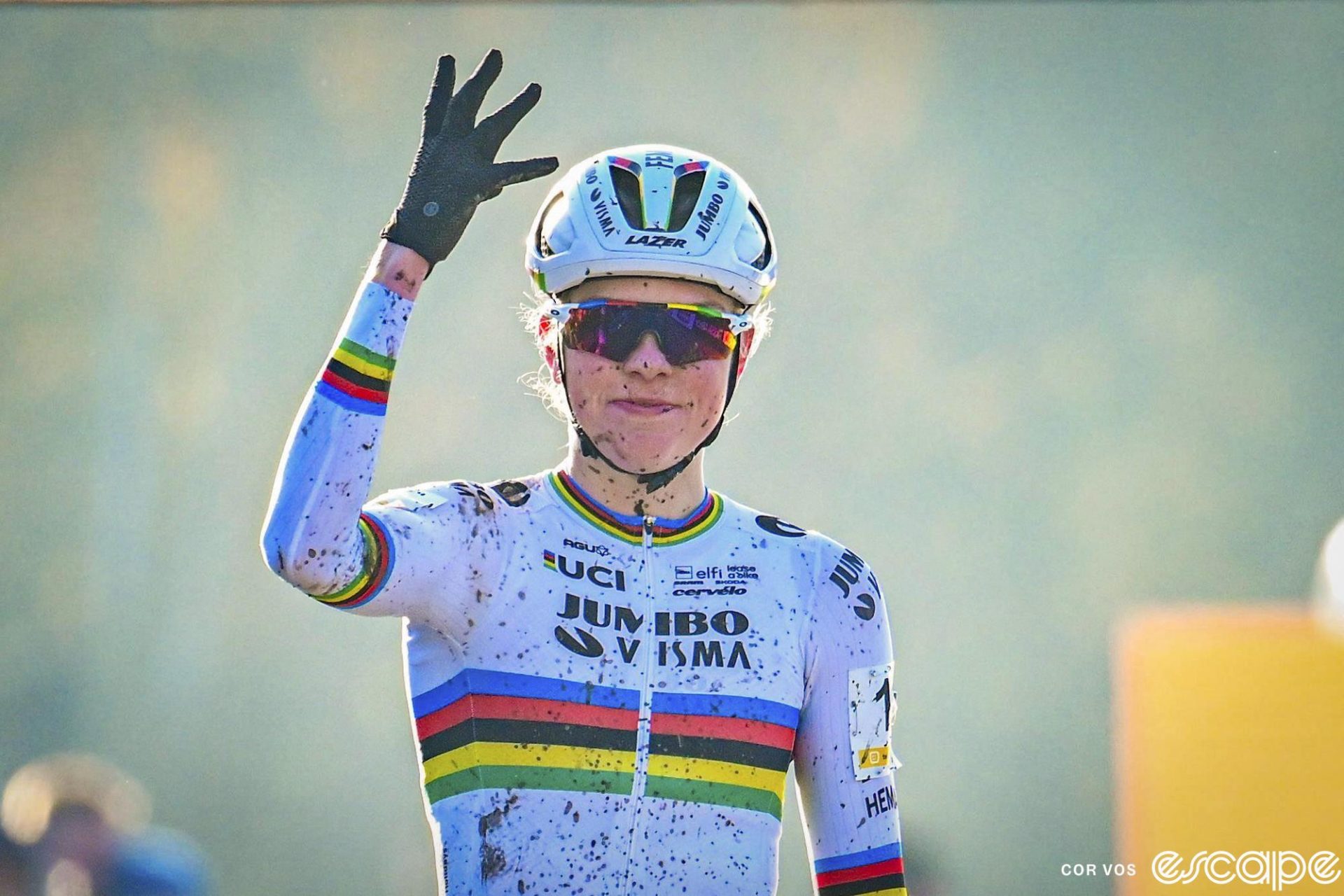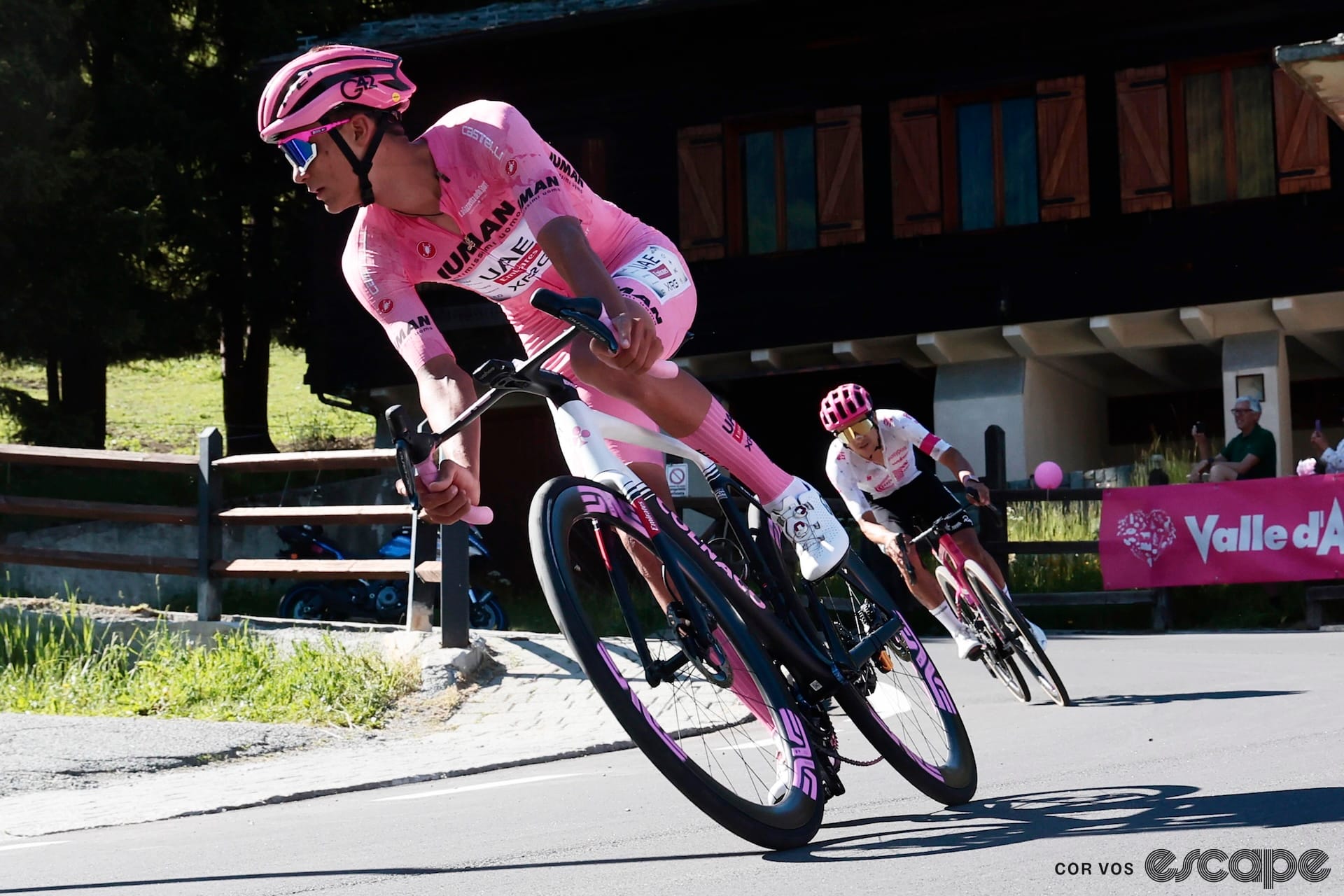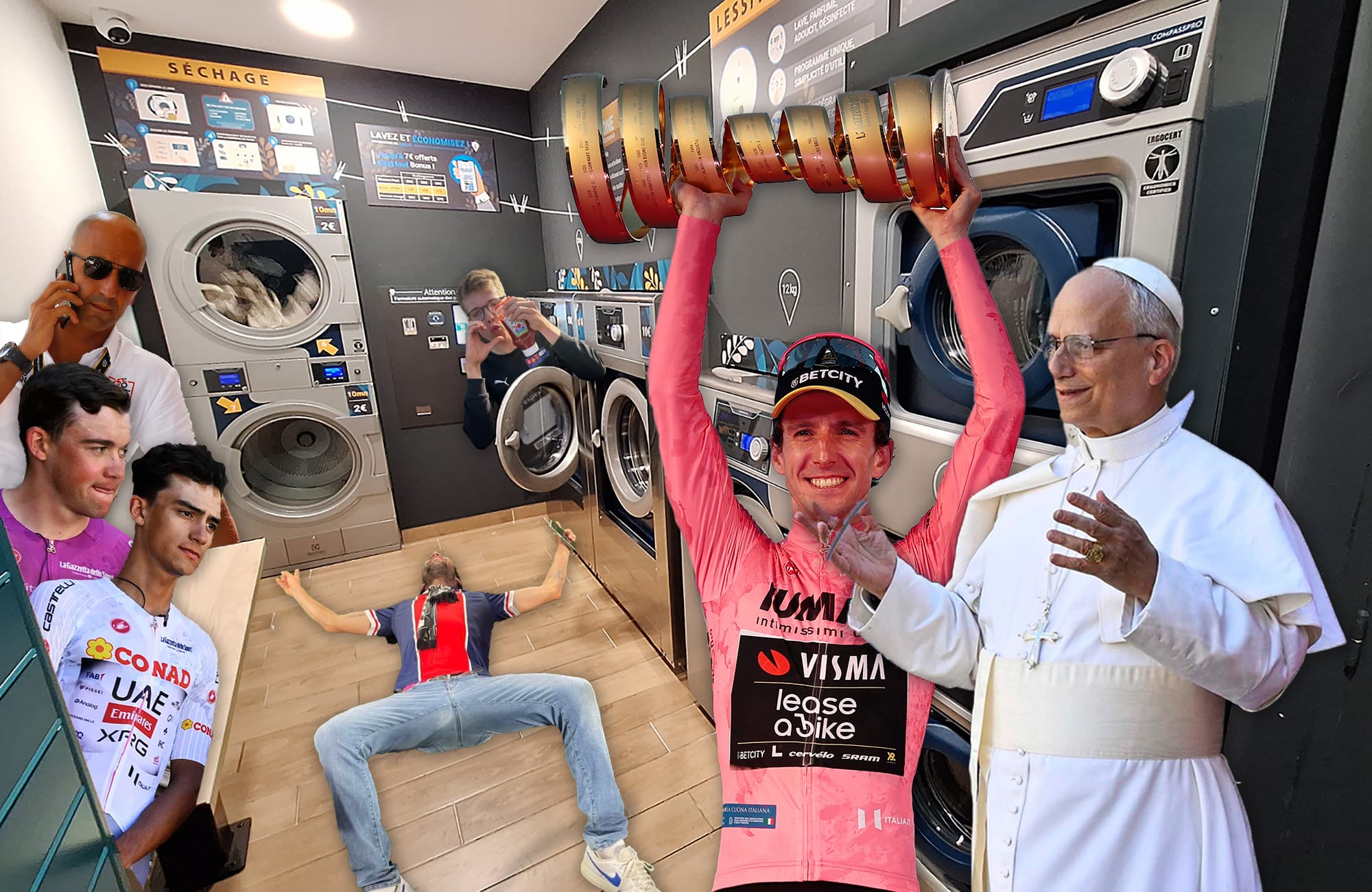In all honesty, you can’t really blame Fem van Empel for skipping Sunday’s Val di Sole round of the cyclocross World Cup. She’s had seriously mixed results there: a win in 2021 followed by an awful 2022 edition that saw her stretchered off course with a knee injury that forced her to miss substantially all of the Kerstperiode races.
Traveling more than 1,000 km from the Netherlands for a single race, on the sketchy ice-and-snow course, doesn’t seem worth it. But before UCI president David Lappartient gets his underwear in a bunch over Van Empel’s absence, she didn't skip the lone Italian round of the World Cup for racing closer to home. She skipped it for no racing.
And it’s working. Don’t look now, but Van Empel has so far put together a perfect season of cyclocross. In fact, she hasn’t lost a race in 11 months, dating back to last January’s Dutch national championships. And with the debate in the sport over racers skipping World Cup rounds for other events or, often, none, Van Empel's unblemished season so far stands as an eloquent rejoinder to the idea that the UCI should have, well, any voice at all in riders' schedules.
Listen, Fem van Empel is very, very good at bicycle racing, cyclocross in particular. And it’s worth noting that she’s built this streak on what appears to be a highly intentional strategy of alternating race and rest. As with last season, Van Empel is studiously avoiding racing twice in a weekend (Saturday's X2O round at Herentals and Sunday's World Cup at Namur mark her first back-to-back races in two years). But she’s being even more careful with her schedule. By this point last season, she’d done 15 races. So far this year? Just nine. The goal seems clear: stay fresh and fast.
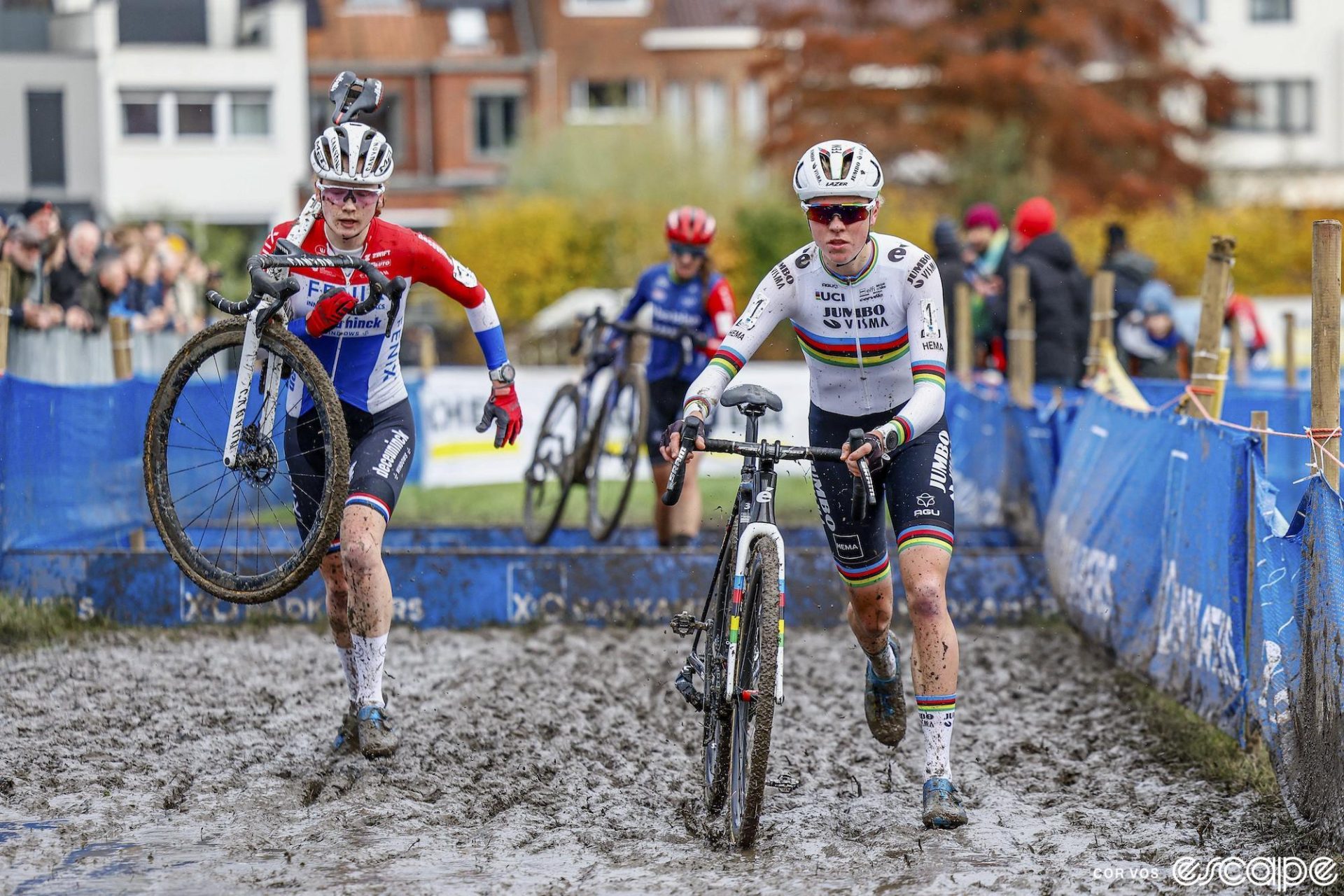
There’s a lot of season left to race, of course, and Van Empel’s streak could end from a crash, or a badly timed mechanical, or just because she’s not the best on a given day in a field that’s steadily deepening with the return of other top competitors like Puck Pieterse, Lucinda Brand, and Shirin van Anrooij after their own breaks from competition. And if the streak does end, that would by no means ruin her season anymore than it did last year. Van Empel's primary competitive goal is to defend the rainbow jersey, her team told Velo, adding that the World Cup schedule is simply too busy to ride every round.
But Van Empel’s clear strategy, not to mention its success, unmasks Lappartient's complaints as mostly a hissy fit that riders aren’t following the grand calendar plan he’s so generously laid out for them. If threatening riders who skip World Cups with being barred from other rounds is the UCI’s plan to enforce its will, it’s not working: among no-shows at Val di Sole were most of the Baloise-Trek Lions outfit, including Lars van der Haar, Pim Ronhaar, and Thibau Nys, plus former World Champion Brand and Van Anrooij – the latter three of whom were at Lidl-Trek's road camp. (Not that the team left Italy empty-handed after Joris Nieuwenhuis essentially rode away from the men’s field on the first lap to a commanding win.)
All of them have missed multiple World Cup rounds this year. Van Empel has raced just two so far this season. Threatening her with more time off probably isn’t going to work. Nor should it. Van Empel is 21 years old. Her competition strategy is almost certainly based on a much longer view of her development and career goals, which clearly include racing on the road (she was 11th overall at the Giro Donne in her first start, and won a stage of the Tour de l’Avenir Femmes). Against that backdrop, what Lappartient wants riders like Van Empel to do doesn’t – and shouldn’t – matter, as he’s at best indirectly invested in their long-term success.
While she’s not positioned her racing schedule as a rejection of Lappartient’s wishes, Van Empel’s choices are the most effective unmasking I’ve seen of his inconsistency (he's not criticized Wout van Aert's choices, for instance) and impotence on the issue. Is the UCI really going to tell the reigning World Champion and defending World Cup series winner that she can’t race a World Cup, or World Championships, because she skipped some rounds?
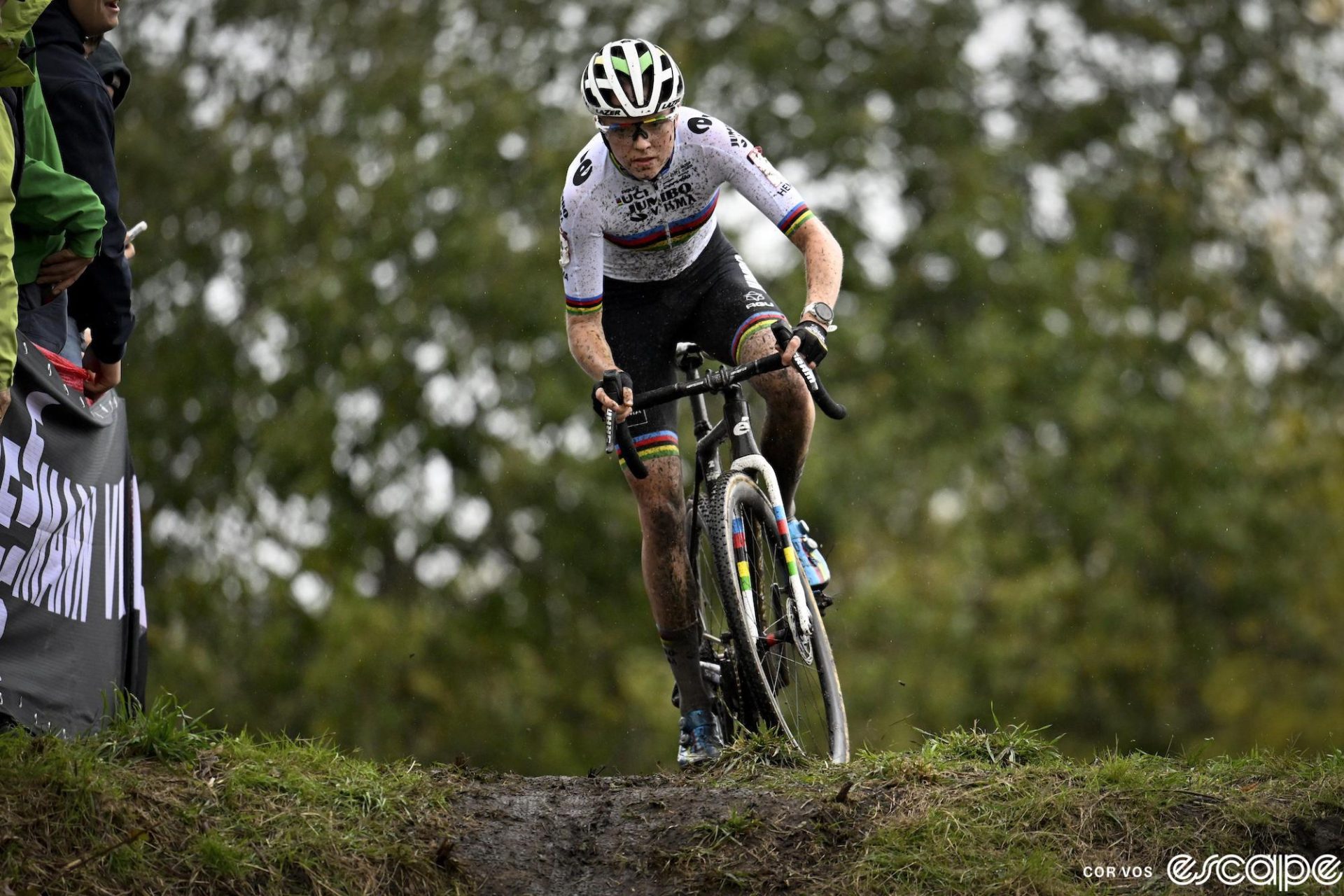
Lappartient’s heart may be in the right place. In increasing the number of World Cup events, the UCI sought to create a full calendar of races, and offer fans more weekends than not where there are high-quality races to watch on both Saturday and Sunday. But he also has a conflict of interest, as the UCI is not merely a sanctioning body here but is promoting its own series over others. In any event, you cannot simply will a complete professional sport into existence, and certainly not in a season or three.
Cyclocross is not, and has never been, a viable career option for even most pro riders. It’s a regionally popular sport, and with few exceptions, most of the sport’s participants rely on other disciplines for most of their livelihood. A number of riders – even on the top teams in the sport – spoke of the logistical and cost issues around travel for the expanded series, which forces them to make difficult competitive and financial choices.
Those are concerns you hear a lot less for road or mountain bike racing; it’s worth noting the mountain bike World Cup has just eight XCO rounds, compared to 14 for cyclocross, despite having a larger and more nationally diverse field, and more sponsors. International rounds of the World Cup make sense to expand its interest. But it's worth asking how and where those make the most sense. The snowy Val di Sole course is fun, but is also a transparent attempt by the UCI to position cyclocross as meeting the “takes place on snow or ice” rule for entry to the winter Olympics. And yet, asking riders to commit to a 14-race series that includes traveling so far for a single event in the middle of the season is actually counterproductive to meeting another criteria for Olympic consideration: sufficient international participation. The men’s field at Val di Sole saw just six nations represented; the women’s field, seven. That won't pass the IOC's scrutiny.
Since Lappartient first voiced his displeasure with the competitive choices of ‘cross racers, many of them have been speaking out in response, essentially telling him why his authoritarian ideas will actually hurt, not help, the sport. The asks seem pretty clear: fewer World Cup rounds and better geographical organization of the calendar so that double-race weekends don’t require ridiculous travel logistics between series (just one rider in the men’s or women’s fields, Thijs Aerts, contested both the Exact Cross round Saturday and the World Cup on Sunday). So far there’s not much sign Lappartient is listening to those voices but if he won’t hear them, perhaps he can see what’s right in front of him. Or, rather, on the Val di Sole start line, what’s NOT right in front of him.
Did we do a good job with this story?

